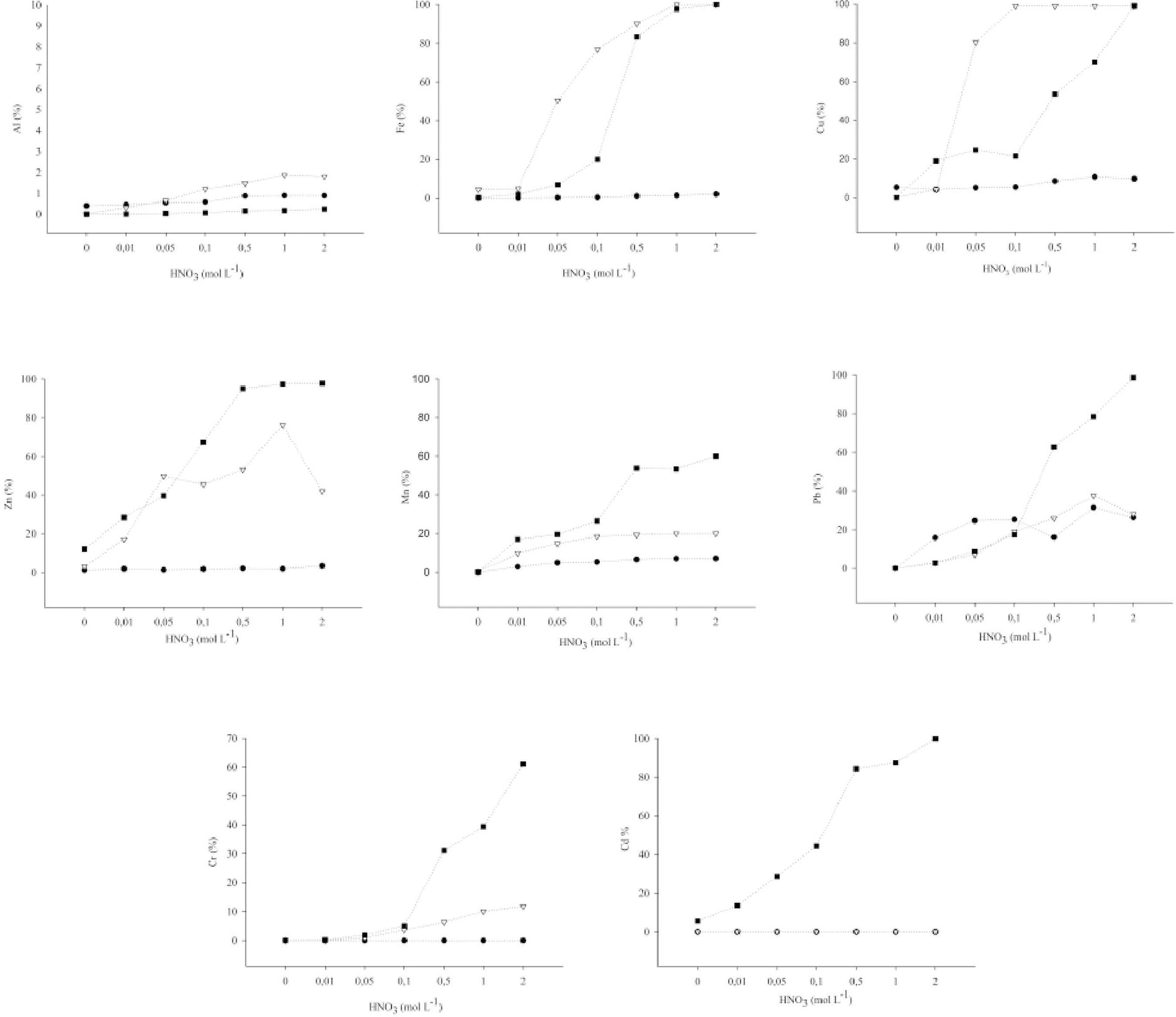ABSTRACT
The biochar, product of pyrolysis of organic waste, has been used as a soil conditioner and alternative on solid waste management. However, the raw material and pyrolysis temperature used influence the quantity and dynamics of release of nutrients and contaminants from the biochar. The objective was to evaluate the use of waste sugarcane bagasse, eucalyptus and sewage sludge for production of biochar and determine the chemical, physical, mineralogical properties and acid extraction of these materials produced at 350 °C and 500 °C. Were evaluated the proportion of C, H, N, O; ashes; macro and micronutrients, plus some contaminants; characterization of mineral phases by diffractometry of X- rays; functional groups by infrared absorption spectroscopy (FTIR). Moreover, it was determined the release of nutrients and contaminants for the extraction in increasing concentration of HNO3 (0,01 - 2,0 mol L-1). The O/C and H/C relations decreased with increasing temperature of pyrolysis, which define a greater stability of the C of biochars. Sewage sludge biochar (BC-L) had the highest nutrient release rates and contaminant metals (Cd, Cr, Ni and Pb). Acid extraction of other biochars was very low (<20% of the total content). The results indicate that the carbon fraction of biochar contributes to the low rate of release of the elements in acid place.
Key words:
Biochar; Waste; Acid extraction



